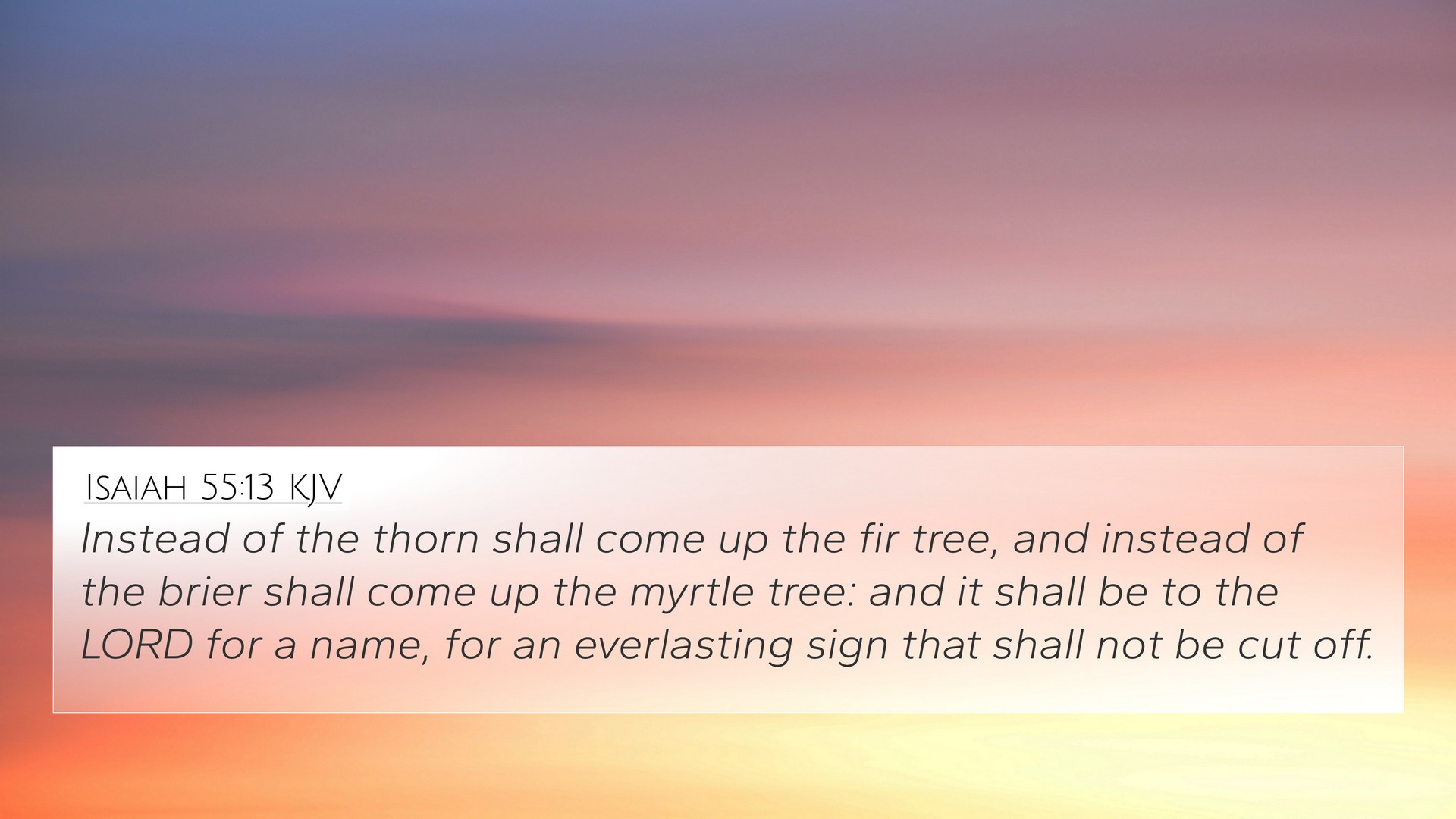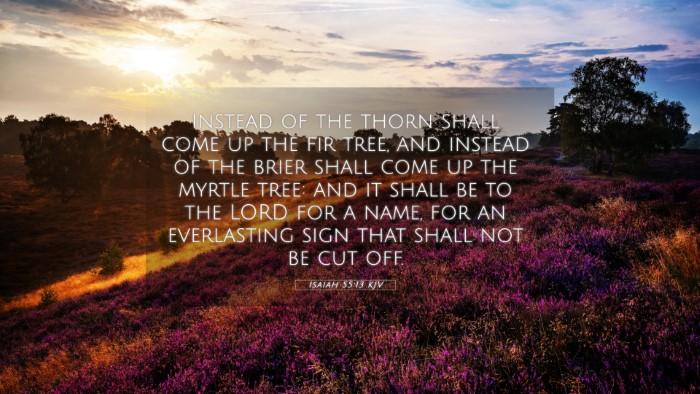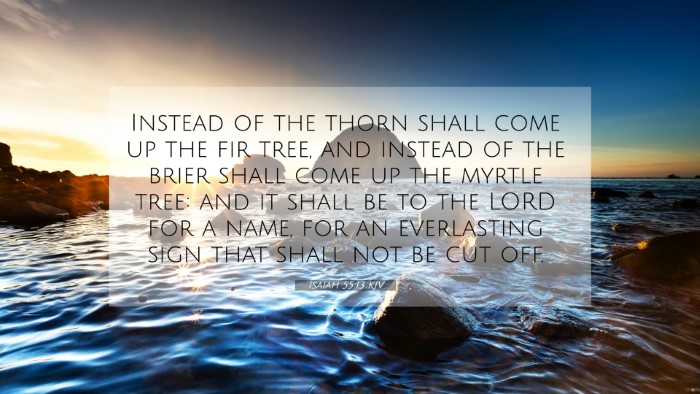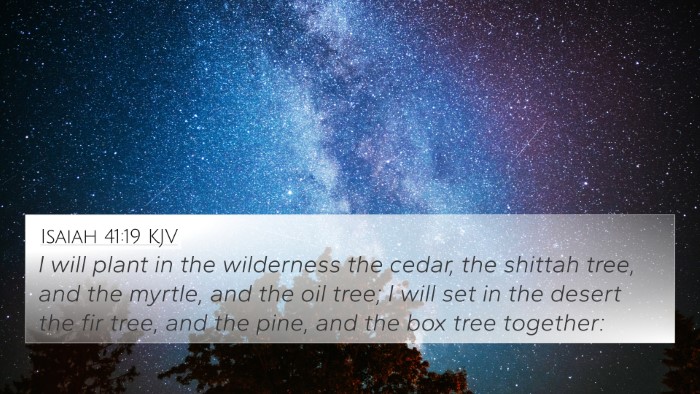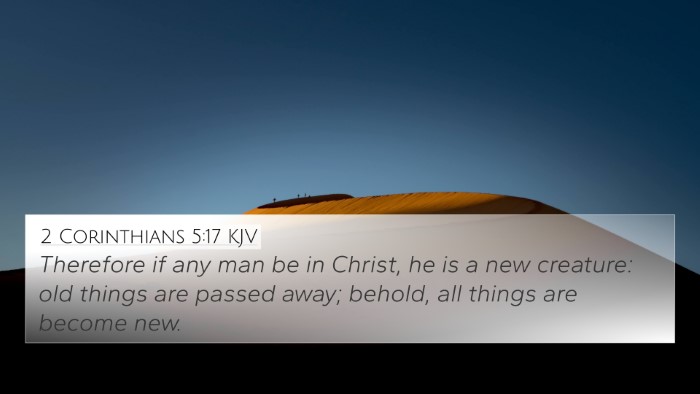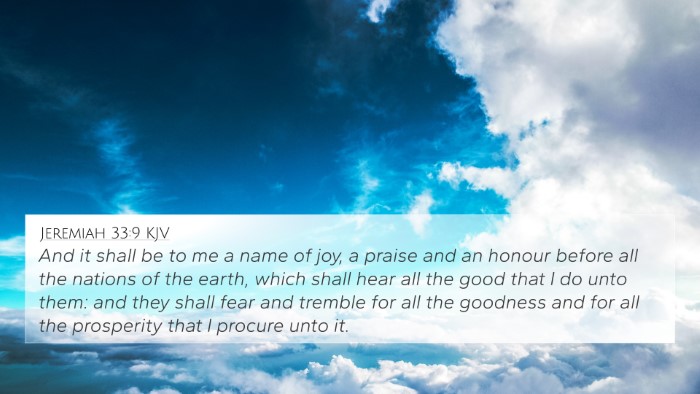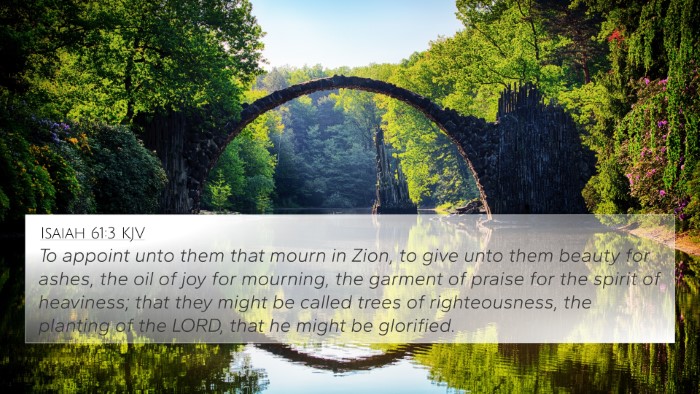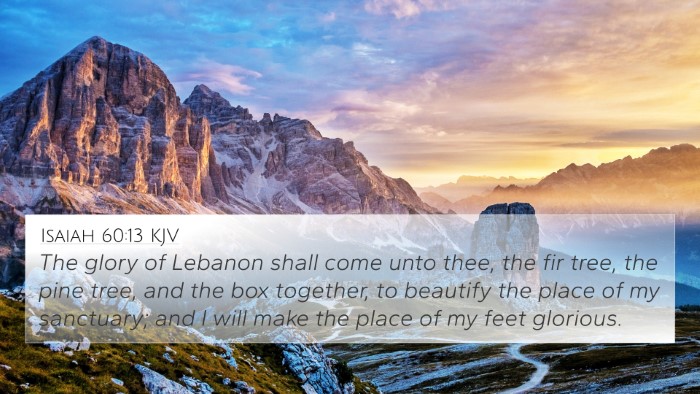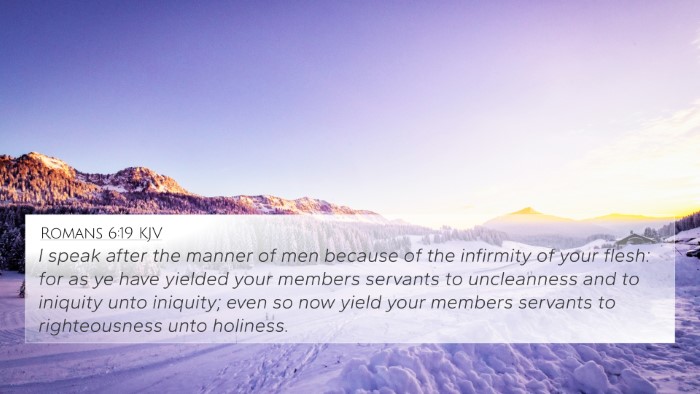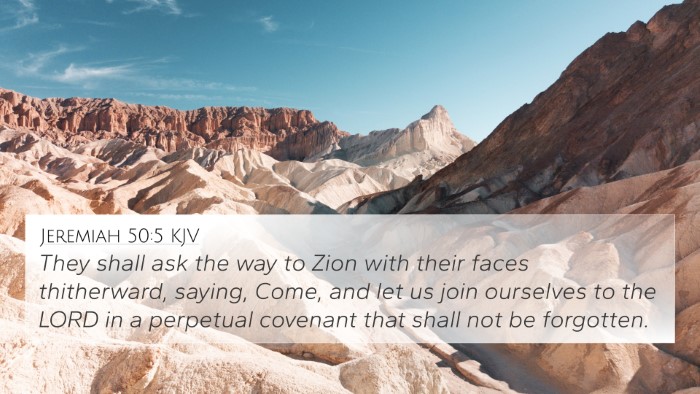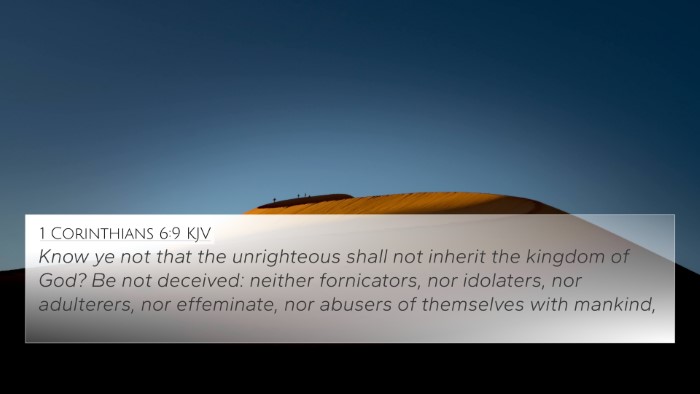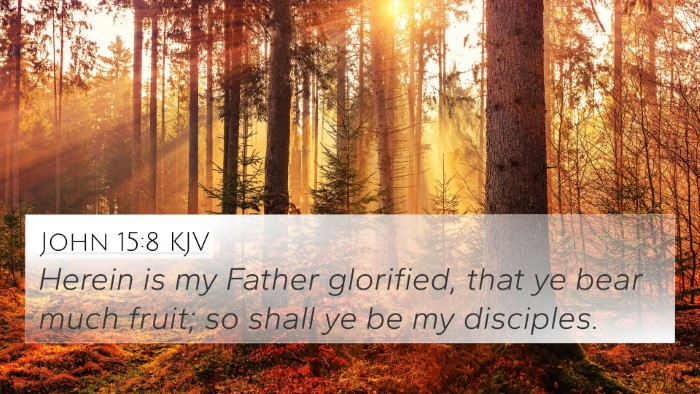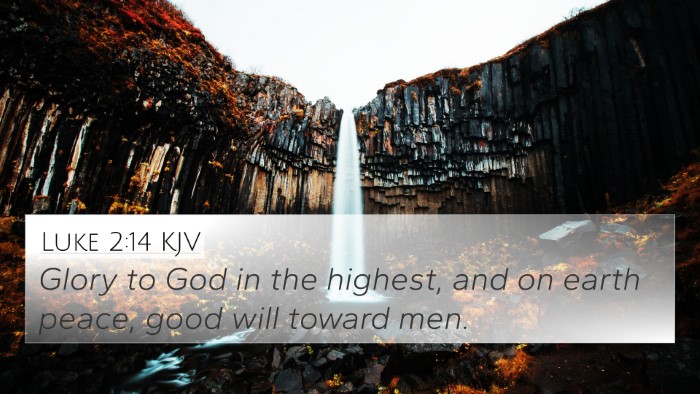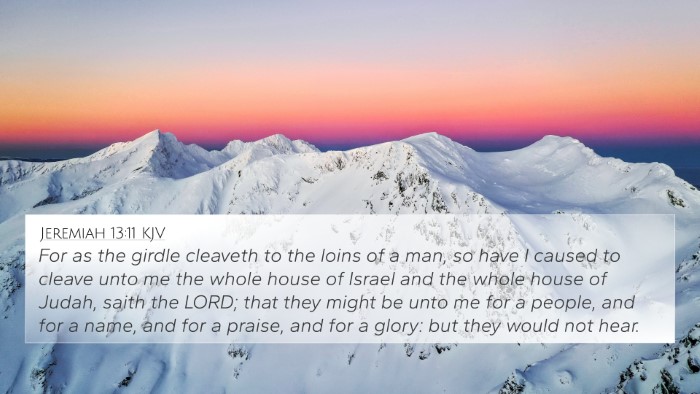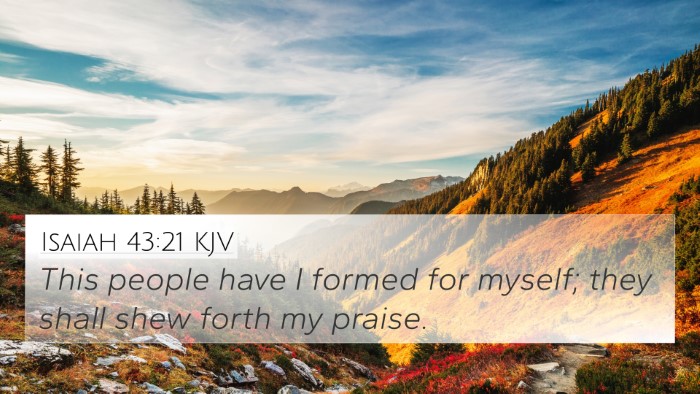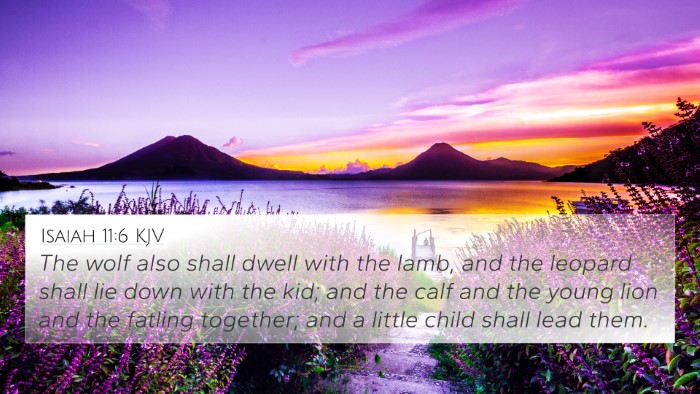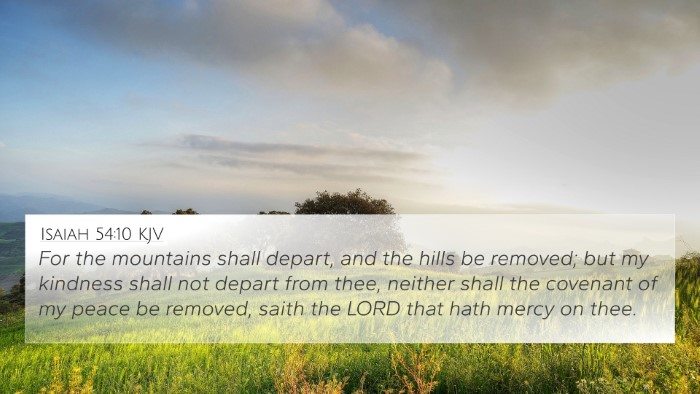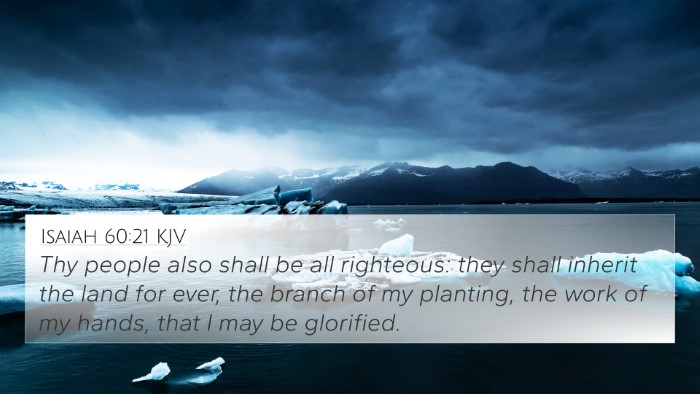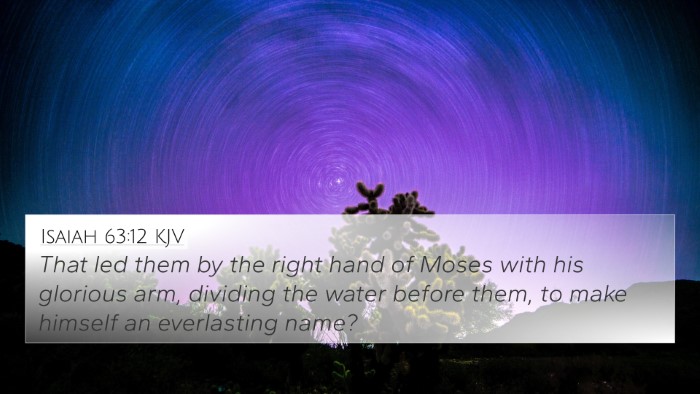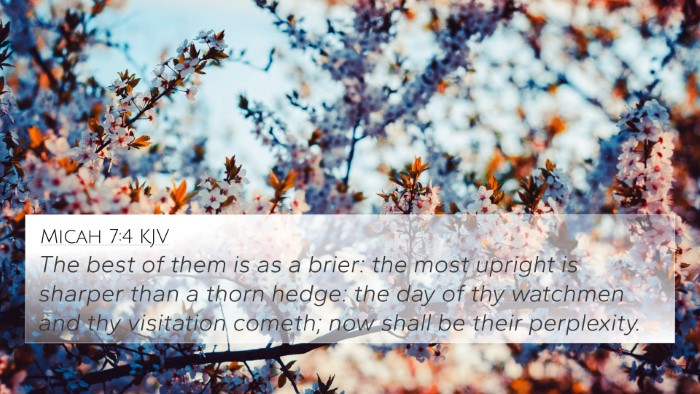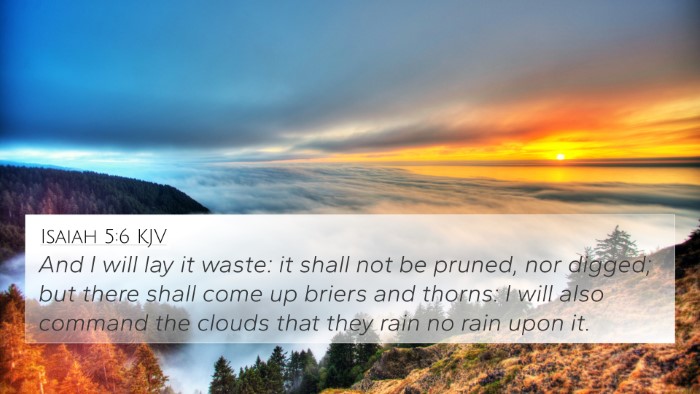Understanding Isaiah 55:13
Isaiah 55:13 states:
"Instead of the thornbush will grow the juniper, and instead of briers the myrtle will grow. This will be for the Lord’s renown, for an everlasting sign, that will endure forever."
Verse Meaning and Interpretation
The verse from Isaiah 55:13 speaks to the transformative power of God’s grace and the promise of renewal. This transformation is symbolized through the imagery of thorns and briers being replaced with the juniper and myrtle, two thriving plants.
Key Insights from Public Domain Commentaries
- Matthew Henry: Emphasizes the contrast between the unproductive brambles and the fruitful trees, highlighting God's ability to restore and beautify the barren places in life.
- Albert Barnes: Suggests that this transformation signifies a broader hope for humanity, indicating that through God's intervention, even the most desolate conditions can flourish and bear witness to His glory.
- Adam Clarke: Points out the symbolism of the thornbush and the myrtle as representative of grace and mercy, illustrating a spiritual renewal and the establishment of God's covenant with His people.
Thematic Connections and Cross-References
Isaiah 55:13 connects well with various other Bible verses that emphasize themes of renewal, restoration, and divine grace. Here are some key cross-references:
- Matthew 7:17: "Likewise, every good tree bears good fruit, but a bad tree bears bad fruit." - This echoes the theme of transformation where good can emanate from the previously barren.
- Revelation 21:5: "He who was seated on the throne said, 'I am making everything new!'" - A promise of renewal and restoration that parallels the message in Isaiah.
- 2 Corinthians 5:17: "Therefore, if anyone is in Christ, the new creation has come: The old has gone, the new is here!" - Highlights the newness brought about by faith.
- Jeremiah 31:12: "They will come and shout for joy on the heights of Zion; they will rejoice in the bounty of the Lord—the grain, the new wine, and the olive oil..." - Illustrates the joyful prosperity that follows restoration.
- Ezekiel 36:35: "They will say, ‘This land that was laid waste has become like the garden of Eden...’" - Further demonstrates the theme of God restoring desolation.
- Psalm 126:4: "Restore our fortunes, Lord, like streams in the Negev." - A call for renewal consistent with the promises given in Isaiah.
- Isaiah 32:15: "Till the Spirit is poured on us from on high, and the desert becomes a fertile field..." - Reflects the rich transformation when God's Spirit is present.
Understanding Cross-References and Thematic Connections
Cross-referencing Biblical texts like Isaiah 55:13 enhances our understanding of scripture and reveals deeper truths about God's nature and His promises to restore. These connections illustrate how various passages interact with each other, forming a rich tapestry of divine intention.
Tools for Bible Cross-Referencing
When studying the Bible and looking for cross-references, utilizing tools such as:
- Bible concordances
- Bible cross-reference guides
- Online cross-reference systems
- Comprehensive Bible study materials
These resources make it easier to discover the thematic connections between different scriptures, allowing for a more profound understanding and interpretation of God's Word.
How to Use Bible Cross-References
Engaging in cross-referencing Bible verses helps identify links between texts, enhancing both personal study and preparation for sermons. It fosters a greater appreciation of scriptural unity."Strengthening faith and providing a clearer context for understanding God's plans across different biblical eras."
Conclusion
Isaiah 55:13 not only signifies hope and renewal but also serves as a pivotal point from which one can explore the connections within Scripture. By examining related verses and embracing the insights from various commentaries, readers can gain a more enriching perspective on God's enduring promise to His people.
Example of Inter-Biblical Dialogue
Imagining a conversation between Isaiah and New Testament writings reveals how profoundly connected these texts are, with both emphasizing God's ability to bring forth beauty from barrenness. Such inter-Biblical dialogue deepens the believer's understanding of God's nature and promises.
In summary, Isaiah 55:13 captures the essence of divine renewal through the metaphor of flourishing plants, inviting believers to meditate on the profound changes God promises to work in their lives.
